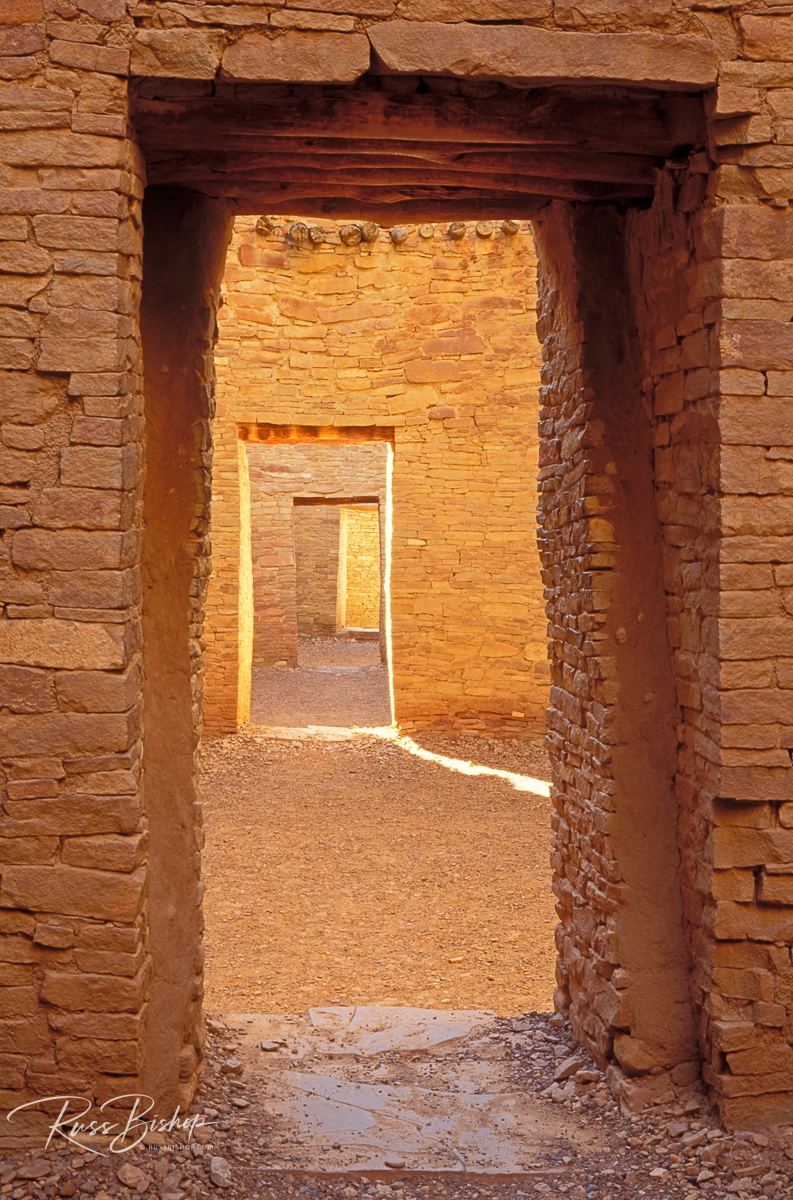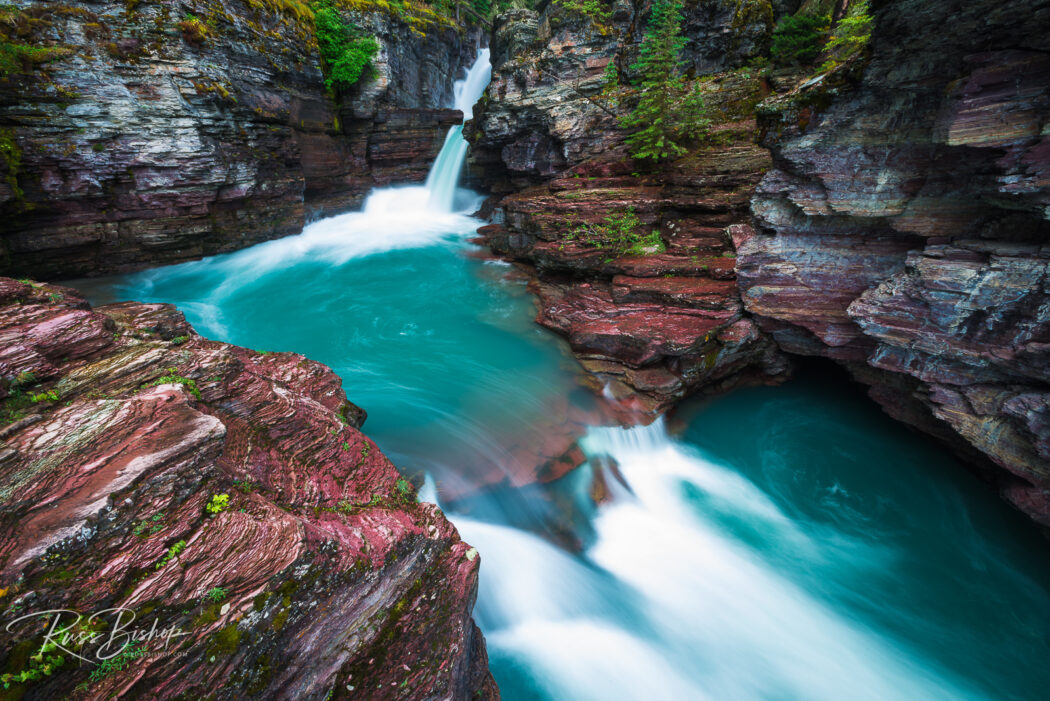
Chaco Culture National Historical Park in New Mexico is the largest concentration of ancient pueblos in the southwest. At its center, Chaco Canyon was a major cultural center of the Anasazi or Ancient Pueblo People between AD 900 and 1150, and contains the most impressive ancient ruins north of Mexico.
Situated high on the Colorado Plateau at over 6,000 feet, the Anasazi were skilled masons and built fifteen major structures at Chaco. Called Great Houses, they included the impressive 650 room Pueblo Bonito (a world heritage site) using stone and timber brought in on a network of roads from up to 15 miles away. They also practiced astronomy and experts believe their buildings were aligned to capture the solar and lunar cycles. Many of them remained the largest buildings in North America until the 19th century.
No one knows exactly why this powerful culture suddenly disappeared in the late 12th century, but they left behind a lasting legacy in stone.
©Russ Bishop/All Rights Reserved


